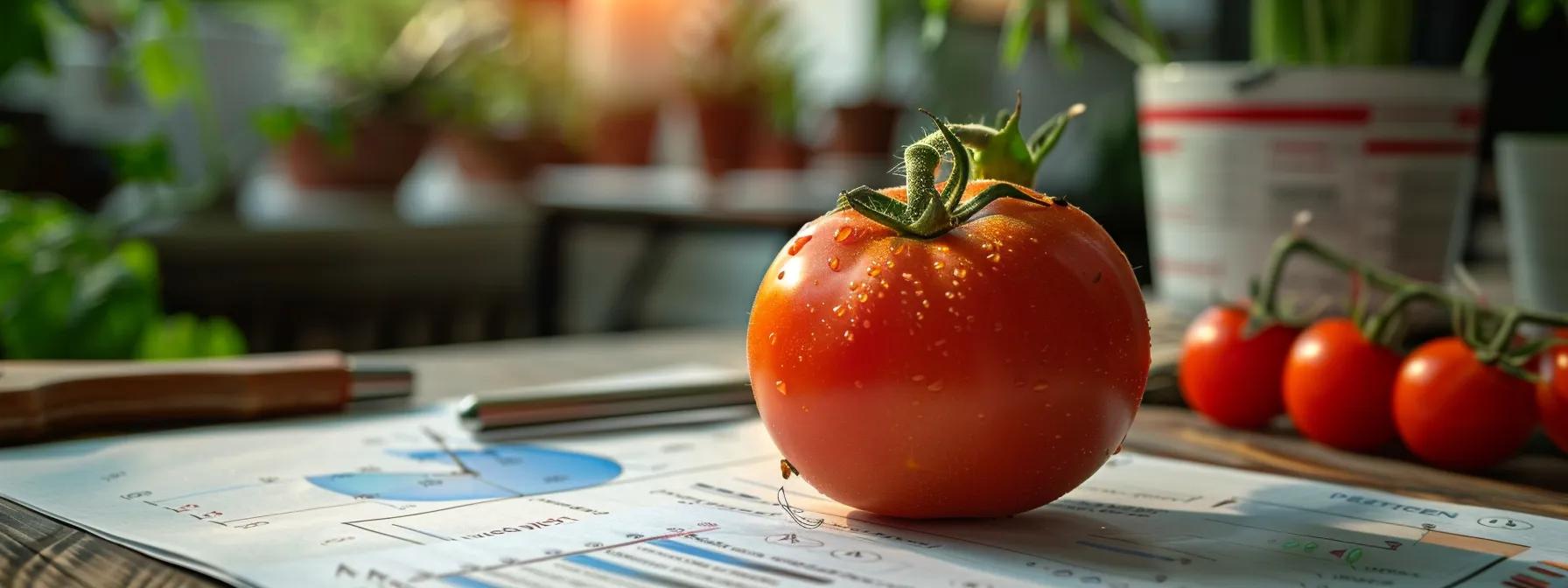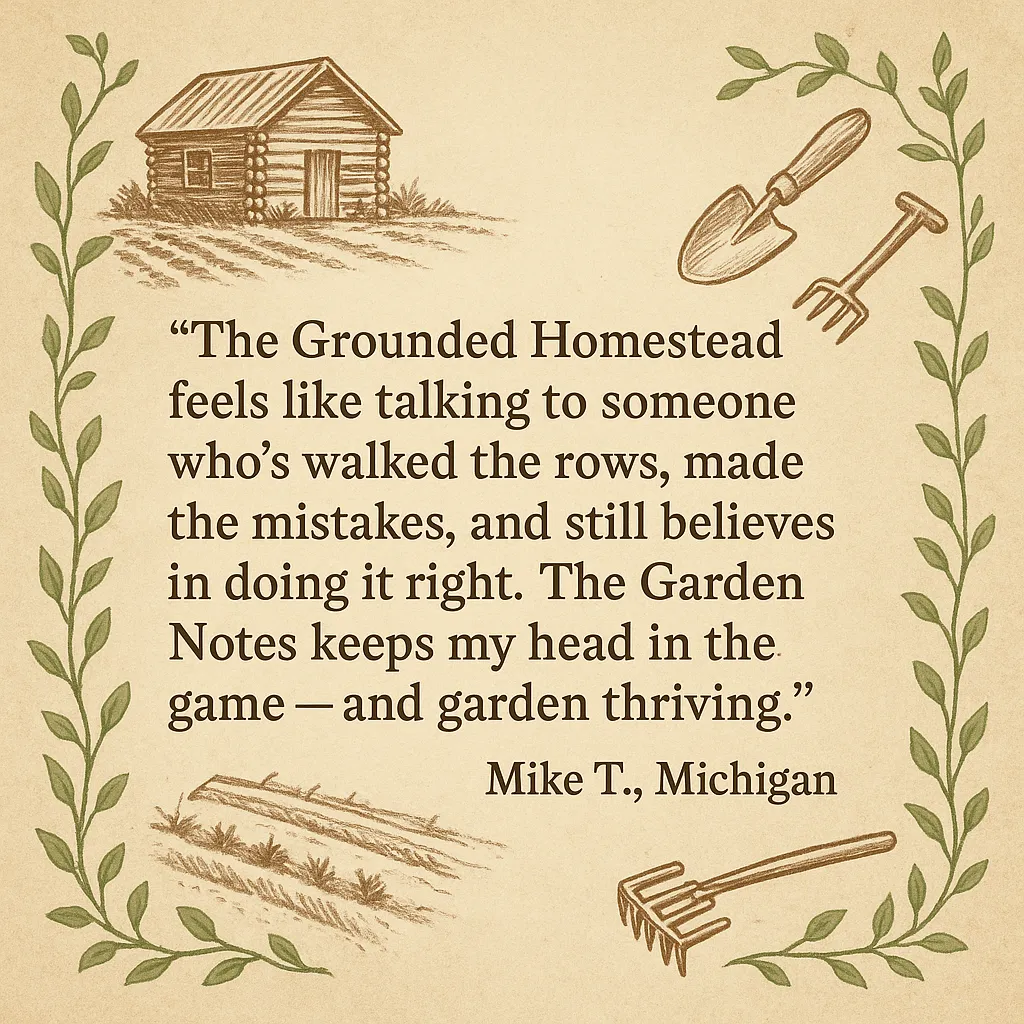
The Top 5 Tomato Problems—And How to Fix Them Before They Ruin Your Harvest
The Top 5 Tomato Problems—And How to Fix Them Before They Ruin Your Harvest
Tomatoes were the first crop that ever made me question if I had what it took to grow my own food.
I still remember that summer. I’d been nursing those plants since April, checking on them like a nervous parent. And yet, by July, the fruits had black bottoms, the leaves were curling, and some split open before I ever got a bite. I thought I’d done everything right. Turns out, tomatoes are stubborn teachers.
If you’ve ever stared at a sick tomato plant wondering what went wrong, you’re not alone. But you’re also not helpless.
Below are the top five tomato problems I’ve faced—and how to solve them before they ruin your harvest. If you’re growing in Zone 5 like we are here in Northern Michigan, I’ll call out a few zone-specific tips along the way. And at the bottom of this post, I’ve got a free printable cheat sheet to keep in your shed.
Let’s dig in.
1. Blossom-End Rot — The Black Bottom Nobody Warned You About
What it looks like:
Dark, sunken spots at the bottom of the fruit. It usually starts on the first few tomatoes and looks like they’re rotting from the base up.
What causes it:
A calcium imbalance in the plant — often triggered by inconsistent watering. This isn’t about soil calcium alone, but whether the plant can actually use it.
How to fix it:
Water evenly and deeply — don’t let your plants dry out, then flood them.
Mulch around the base to hold in moisture.
Avoid high-nitrogen fertilizers early in the season.
In stubborn cases, try a foliar calcium spray (I’ve linked one I trust in the printable).
Zone 5 tip:
Sandy soil drains fast. If that’s you, double up on mulch and add compost before planting to help with nutrient retention.
Grandma says:
“Don’t let your plants go thirsty, then drown them. Tomatoes like rhythm.”
2. Early Blight — The Fungal Sneak Attack
What it looks like:
Yellowing lower leaves with brown spots that look like targets. It usually starts at the bottom and works its way up.
What causes it:
Fungal spores in the soil splash up onto leaves when watered from above or after heavy rain. Poor airflow makes it worse.
How to fix it:
Prune the bottom 6–8 inches of leaves to prevent contact with soil.
Stake or cage plants to allow air to flow through the center.
Use copper fungicide or neem oil weekly if the problem persists.
Water at the base only — not overhead.
Prevent it next year:
Rotate crops (don’t plant tomatoes in the same bed two years in a row).
Clean up plant debris at the end of the season.
Internal tip:
Want a simple pruning method? I wrote a full guide to tomato pruning [link to your own post].
3. Splitting Fruit — When Tomatoes Burst Before the Table
What it looks like:
Tomatoes cracking open near the stem or along the side. Some look like they’ve exploded.
What causes it:
A sudden influx of water — usually after a dry spell followed by a heavy rain or deep watering.
How to fix it:
Keep your watering schedule consistent.
Deep water twice a week is better than daily sprinkles.
Pick tomatoes just before they’re fully ripe if you know a storm is coming.
Grandma’s tip:
“If it splits, stew it. Still good eating — just not for a salad.”
4. Leaf Curl — Stress Signals You Can’t Ignore
What it looks like:
Leaves curling inward or upward. The plant may look twisted or wilted even if the soil is moist.
What causes it:
Heat stress, wind, transplant shock, or even over-fertilizing. Sometimes it’s a virus — but most of the time, it’s just stress.
How to fix it:
Provide shade during heat waves (shade cloth works wonders).
Water early in the morning when temps are still low.
Limit disturbance and fertilizing during transplanting.
Zone tip:
If you’re in Zones 8 or higher, you’ll see this more often in mid-summer. Tomatoes can shut down growth above 90°F — give them shade, not more water.
When to worry:
If you see yellow mottling or twisted growth along with curling, it may be viral. Remove the plant and don’t compost it.
Faith-aligned note:
“Even the healthiest plants get stressed. Doesn’t mean they’re done. Stick with it.”
5. Yellowing Leaves — The Many Faces of Deficiency
What it looks like:
Yellow leaves, sometimes with browning or drying. Can happen at the bottom or throughout the plant.
What causes it:
Bottom leaves yellowing? Could be nitrogen deficiency or natural aging.
New growth yellowing? Might be a nutrient lockout or pest issue.
All over yellowing? Possibly overwatering.
How to fix it:
Compost or a balanced organic fertilizer (I top-dress mid-season).
Water only when the top 2 inches of soil are dry.
Prune yellowed leaves once fruit has set.
Pest heads-up:
Flip the leaves over — if you see tiny green bugs, you’ve got aphids. They’ll drain your plant and leave a sticky mess.
Internal link prompt:
Got bugs? Check out my full tomato pest guide [link].
🧩 Bonus Problem: Tomato Hornworms — The Night Raiders
What it looks like:
Big chunks missing from your leaves, plus droppings on the ground. Hornworms can defoliate a plant in a night.
How to fix it:
Check early morning and at dusk — they’re easiest to find then.
Hand-pick and toss into a bucket of soapy water.
Use a BT spray if infestation is heavy (safe for organic use).
Grandma’s wisdom:
“If you see droppings but no worm, grab a flashlight. They don’t hide well in the dark.”
🛠️ Prevention: Your Best Defense
Mulch right after planting
Prune lower leaves and suckers regularly
Water early in the day — and deeply
Rotate tomato beds yearly (3-year cycle if possible)
Start with compost-rich soil and healthy seedlings
📥 Free Printable: Tomato Troubleshooting Guide
Don’t try to memorize all this. I’ve created a one-page chart that breaks down:
Problem
Symptoms
Likely Cause
Quick Fix
Prevention Strategy
🖨️ Print it, fold it, and tape it inside your garden shed or greenhouse.
👉 [Link to download or email-gated form]
💬 Let’s Keep This Real
Tomatoes will test your patience—but once you know what to watch for, you’ll start catching problems early and saving the season.
Got a tomato problem I didn’t cover? Shoot me a message or leave a comment. I read every one, and I’ll include the best ones in a future post.
If this helped you out, share it with a friend or neighbor who’s also knee-deep in tomato troubles.
🌱 Final Thought
“Build houses and settle in them; plant gardens and eat what they produce.” — Jeremiah 29:5
Keep tending. Even when the leaves curl or the fruit splits. There’s still something good growing under the surface — if you don’t give up.
— The Grounded Homestead


Facebook
Instagram
X
Youtube